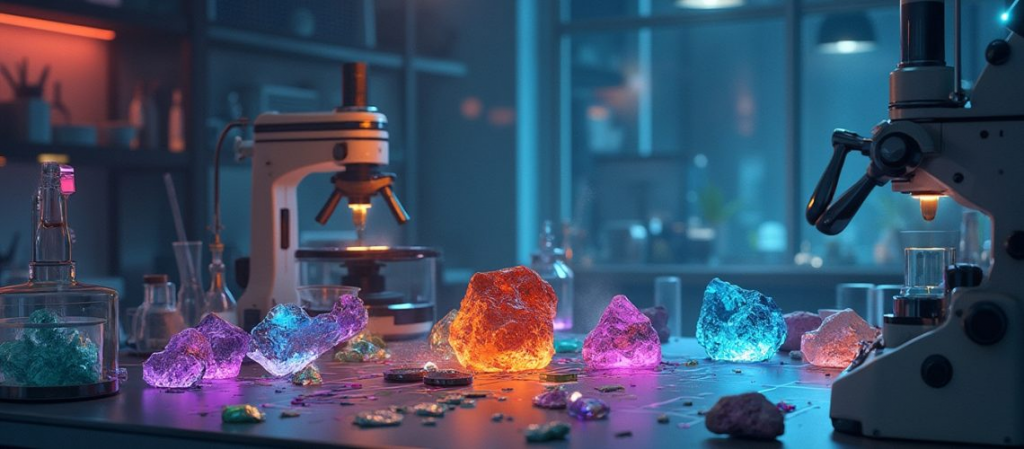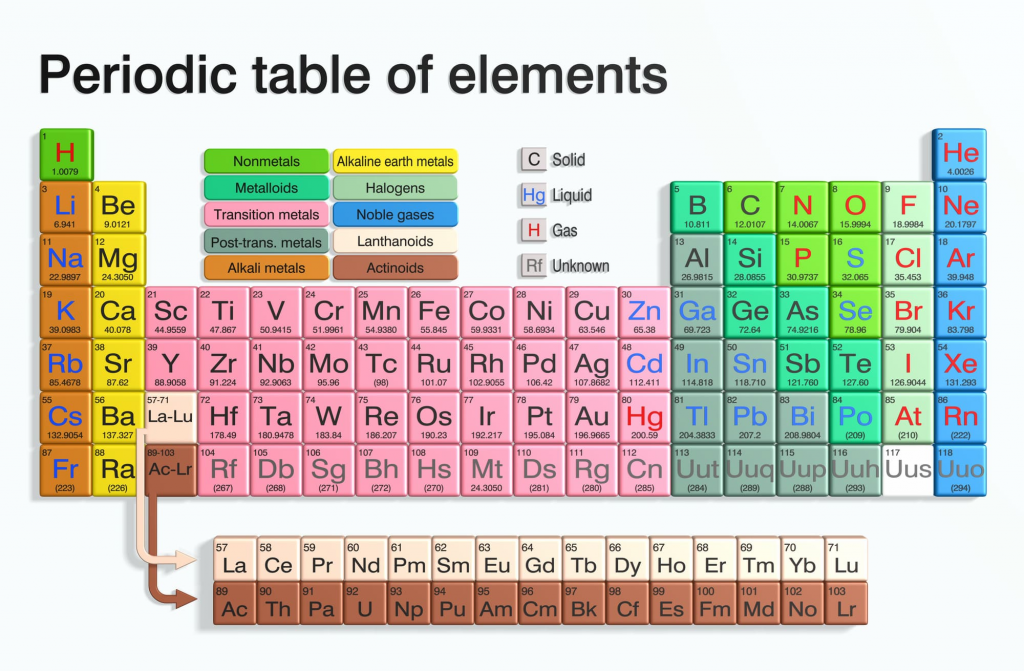Rare Earth Elements (REEs) may not be as well-known as gold or silver, but they are just as valuable—if not more—when it comes to modern technology. These 17 elements, including neodymium, dysprosium, and yttrium, play a crucial role in everything from smartphones to renewable energy systems. Despite their name, REEs are not particularly rare, but they are challenging to extract and refine, making them a highly strategic resource for global industries. Discover the global importance of rare earth elements (REEs) and their real-world applications in technology, energy, and defense. Learn how these critical minerals shape industries and the challenges surrounding their supply.
With the growing push for green energy and technological advancements, the demand for REEs has skyrocketed. Nations worldwide are now focusing on securing their supply chains, given the heavy dependence on China, which dominates over 60% of global rare earth production.
Key Takeaways:
- REEs are crucial for consumer electronics, green energy, defense, and medical applications.
- Global dependence on China for REEs is driving new mining and recycling initiatives.
- Sustainability and innovation will shape the future of rare earth supply chains.
- Experts like Mattias Knutsson stress the need for diversified, ethical sourcing and investment in REE alternatives.
By understanding the role of REEs in everyday life, we can appreciate their impact and support sustainable solutions for future generations.
What Are Rare Earth Elements (REEs)?
Rare Earth Elements (REE) are a group of 17 metallic elements found in the Earth’s crust. These elements include scandium, yttrium, and the 15 lanthanides. Despite their name, rare earth elements are not as scarce as gold or platinum. However, they are challenging to extract and refine due to their geological dispersion and complex separation processes.
REEs are categorized into two groups:
- Light Rare Earth Elements (LREEs) – Includes lanthanum, cerium, praseodymium, and neodymium.
- Heavy Rare Earth Elements (HREEs) – Includes europium, terbium, dysprosium, and others. These are generally less abundant but crucial for high-performance applications.
The Global Importance of Rare Earth Elements

REEs are essential for modern industries, from defense to consumer electronics. Their importance is broke down into three key areas:
1. Technological Backbone
REEs power many of the devices we use daily. Smartphones, laptops, and televisions rely on elements like neodymium and praseodymium to function efficiently. Without these elements, innovations such as lightweight batteries, high-resolution displays, and efficient touchscreens would be nearly impossible.
2. Green Energy Transition
The world is moving toward a cleaner energy future, and REEs are at the heart of this transformation. Wind turbines and electric vehicle (EV) motors use powerful magnets made from neodymium and dysprosium. These elements help create lightweight and energy-efficient components, making them critical to achieving net-zero emissions goals.
3. Strategic and Economic Influence
REEs are not just about technology; they are a matter of national security. The defense sector relies on them for fighter jets, missile guidance systems, and satellite communications. As a result, countries are racing to reduce reliance on China and diversify their REE supply chains.
With the U.S., Europe, and Australia investing in rare earth mining and refining, the coming years could see a shift in the geopolitical landscape regarding these critical materials.
Real-World Uses of Rare Earth Elements (REEs)
The applications of REEs extend across multiple industries. Here’s how they are shaping our daily lives and future technologies:
1. Consumer Electronics
- Smartphones & Tablets – Neodymium magnets are used in speakers, vibration motors, and wireless charging components.
- Laptops & Hard Drives – REEs enhance storage capacity and processing speed, making devices more efficient.
- LED Displays – Europium and terbium provide the bright colors in LED screens, making them more vibrant and energy-efficient.
2. Electric Vehicles (EVs) and Batteries
- Magnets in EV Motors – Neodymium and dysprosium are essential for high-performance electric motors.
- Lithium-ion Batteries – Cerium and lanthanum improve battery stability and efficiency.
- Charging Infrastructure – REEs help in the development of fast-charging technology, crucial for widespread EV adoption.
3. Renewable Energy
- Wind Turbines – REEs power the magnets in wind turbine generators, increasing efficiency and reducing maintenance.
- Solar Panels – Yttrium and europium enhance photovoltaic performance, making solar energy more viable.
- Hydrogen Fuel Cells – REEs play a role in improving the efficiency of hydrogen production and storage.
4. Aerospace and Defense
- Military-Grade Sensors & Radars – Used in advanced targeting and communication systems.
- Jet Engines – REEs enhance the durability of superalloys used in high-performance aircraft.
- Missile and Satellite Systems – Critical for advanced defense and space technology.
5. Medical Applications
- MRI Machines – Gadolinium improves image clarity in MRI scans, making medical diagnostics more precise.
- Cancer Treatment – Lutetium is used in targeted radiation therapies for treating certain cancers.
- Biomedical Devices – REEs help in creating biocompatible implants and surgical instruments.
6. Industrial and Manufacturing
- Glass and Ceramics – Cerium and lanthanum improve glass clarity and resistance to damage.
- Catalysts in Oil Refining – Lanthanum-based catalysts help refine petroleum more efficiently.
- Water Purification – REEs are used in advanced filtration systems to remove contaminants.
Most Used Rare Earth Materials (REEs)

Some REEs are more widely used due to their unique properties and industrial demand:
- Neodymium (Nd) – Used in high-strength permanent magnets for wind turbines, electric vehicles, and hard disk drives.
- Dysprosium (Dy) – Enhances magnet performance in high-temperature applications, critical for EV motors and defense technologies.
- Terbium (Tb) – Used in green phosphors for LCD screens, as well as high-efficiency lighting and magnets.
- Europium (Eu) – Provides red phosphors in LED displays and fluorescent lamps.
- Yttrium (Y) – Essential for superconductors, cancer treatments, and camera lenses.
- Gadolinium (Gd) – Used in MRI contrast agents, as well as nuclear reactor shielding materials.
The Future of Rare Earth Elements (REEs)
The demand for REEs is expecting to grow exponentially as industries continue to innovate. However, the global supply chain faces challenges:
- Limited Mining Operations – Most REE deposits are concentrated in a few countries, making supply chains vulnerable.
- Environmental Concerns – Mining and refining REEs generate toxic waste, necessitating sustainable extraction solutions.
- Recycling & Alternative Materials – Research is ongoing to find substitutes for REEs and develop recycling methods to recover them from old electronics.
Governments and companies worldwide are investing in new mining operations, improved recycling methods, and alternative technologies to ensure a stable supply of these critical materials.
Conclusion: The Expert Perspective
Rare Earth Elements are the invisible force behind modern innovation, touching nearly every aspect of our lives. As the world shifts towards a more sustainable and technologically advanced future, their significance will only increase. The demand for rare earth elements will only increase as global industries push toward sustainability, technological innovation, and energy efficiency. The strategic importance of these materials highlights the need for diversified supply chains, increased recycling efforts, and advancements in alternative technologies.
Industry leaders like Mattias Knutsson, a global procurement and business development expert, emphasize the need for a diversified and secure REE supply chain. According to Knutsson, “The demand for rare earth elements will only increase as global industries push toward sustainability, technological innovation, and energy efficiency. The strategic importance of these materials highlights the need for diversified supply chains, increased recycling efforts, and advancements in alternative technologies.”
In an era where technology, energy, and sustainability are deeply intertwined, REEs stand at the center of progress. As nations work towards greater independence and new innovations emerge, the strategic importance of rare earth elements will only continue to grow. Ensuring a stable, responsible supply of these elements is not just an economic priority—it’s a global necessity.
Now that you understand the importance of REEs and their real-world applications, you might be wondering: Where are these elements found? How are they mined?
Stay tuned for the next part of our REE series, where we’ll uncover the locations of rare earth deposits, the mining techniques used to extract them, and the challenges of sourcing these crucial materials. You won’t want to miss it!
👉 Continue reading to the next part to explore more!





